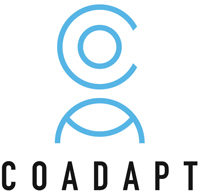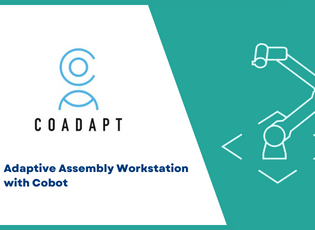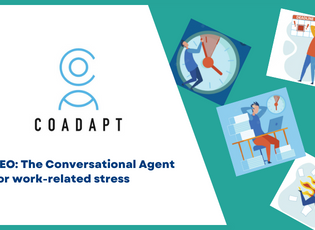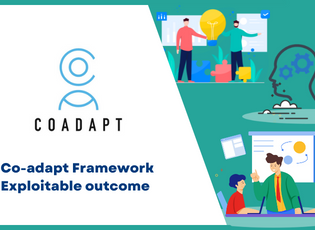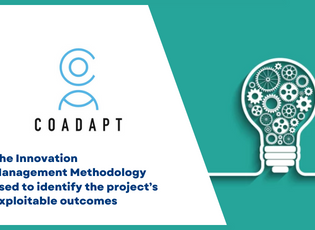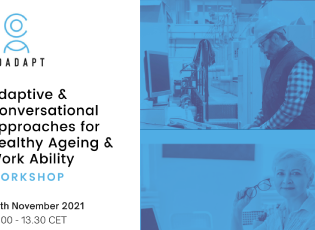
H2020 Research Projects are also impacted by the COVID-19 pandemic in numerous ways but mainly, due to the physical contact restrictions that disrupt in-lab research and face to face trials with users. For Coadapt in particular with a majority of consortium partners based in Italy, our partners had to exercise maximum flexibility to be able to have as minimum disruption on the project as possible.
Let’s see how are these profound challenges managed in our project and how our different use cases have been affected.
Coadapt Application Study 1 Conversational Agent – SISLab University of Trento & IDEGO
COVID19 impacted on our first intervention because the virus erupted in Italy exactly between the seventh and eighth online sessions of our stress management training. The impact can be assessed in psychological consequences: on one hand, the anxiety-inducing conditions of the quarantine emerged from the notes, thoughts and words of the patients at the end of our intervention, and on the other, the last session concerning effective communication in the workplace, was impossible to evaluate being participants already in isolation at home and therefore unable to actively experience it. COVID also blocked the second round of intervention: first, we could not recover the devices from the participants in the first round (the devices would not have been possible to deliver to the second round participants anyway), and second because all the seminars and meetings scheduled within companies and Italian municipalities for the recruiting activities of the test were postponed. The recruitment has been initially stopped and the activities have therefore been reworked in order to create online material with the same degree of engagement and efficacy.
Adaptive Assembly Workstation Study 2 – HIT University of Padua
The Human Inspired Technology Research Centre (University of Padua) is primarily focusing on studies related to the utilization of an Adaptive Assembly Workstation (AAW) by senior workers. At present, due to the COVID-19 pandemic, the actual impossibility of co-presence in the same laboratory room of more than one individual and the obligation to keep at least one meter distance between people do not allow to carried out experiments.
To face the restrictions, HIT is designing and developing experiments exploiting the methodology of Virtual Reality. In the experiments, participants will interact with virtual twin of the AAW. This solution will ensure compliance with the safety standards to protect participants and experimenters. Concurrently, HIT is collaborating with software developers in the implementation of adaptive features in the AAW software aimed at supporting the workers in situations of extreme levels of cognitive workload and stress.
BNP is the counterpart in this process, and during this critical period has updated the software for the installation and control of the devices which have to interconnect within the Adaptive Assembly Workstation (AAW). To deal with the COVID-19 emergency, BNP has just made all the necessary implementation in the plant to allow visitors entrance. To avoid the gatherings, each visit of BNP has to be reserved mandatorily. At the entrance, each individual’s temperature is taken through an infrared thermometer, and masks and gloves are provided. All external people have dedicated access and toilettes. In particular, BNP has restricted the access of external people related to the CO-ADAPT project to the R&D area only.
Coadapt Application Study 2 Behavioral change application – University of Helsinki
Restrictions on physical contact equally affect our work on user-centered design and we had to make a few adjustments on how we conduct user studies over the course of the SARS-CoV-2 pandemic. An obvious way to tackle the restrictions is to conduct user studies remotely. While obvious, remote user studies present their own challenges such as maintaining participants’ engagement in uncontrolled settings and walking the participants through different steps in the study. We realized early on that it might be confusing to have different links for each of the study steps, such as filling in demographic data, using the mobile application, and rating the user experience. They would better be integrated to provide an experience that is as streamlined as possible. Our solution involved some unexpected uses of the conversational agent. We used the agent and the chat interface within the application to gather demographic data, direct the participants to various tasks, and get their feedback after each task. The outcomes with this approach have so far been very positive. Our next challenge? Maintaining user engagement over the course of days instead of fifteen minutes.
